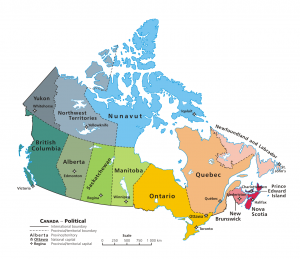By Carol Udell
Good quality research isn’t cheap but there are a few things you can consider when your budget is tight and research is necessary.
1) Broaden your target groups. It’s nearly always cheaper to run research with the general population simply because it’s easier to find and contact them. With that in mind, consider whether you can loosen up the targeting strategy for your target group. Must you target people aged 35 to 39 or can you access relevant data with people aged 21 to 49? Must you target CEOs or could you access relevant data with anyone in the senior leadership team? Rethinking who is your relevant target group is a great way to reduce the sample costs. If you do this carefully, the risks are very small. Tweet this!
2) Write shorter questionnaires. This is probably the simplest way to reduce costs without sacrificing quality. Many questionnaires are 20, 30, or even 40 minutes long. If you can strip out questions that truly aren’t necessary, you will save valued minutes and the incentive associated with those minutes. Cut questions that were put there as ‘nice to know’ questions. Cut questions that you know can never be acted on because the brand manager won’t agree to it or the costs to implement them will be too high. Cut questions that are confusing or difficult to answer as the responses won’t be valid anyways. Tweet this!
3) Analyze fewer groups. Fewer groups can mean different things to different people. Most commonly, it means instead of testing 5 creatives or 5 locations, you only test 3 or 4. Alternatively, it could mean instead of cutting data from a quantitative questionnaire into people from small, medium, and large communities, you only cut them into larger and smaller communities. What’s the risk? Being unable to identify important interactions. For example, by breaking region, income, age, or other continuous variables into two rather than three or four groups, you might not be able to see a curvilinear relationship, perhaps that young and old people share opinions but middle-aged people do not. Tweet this!
4) Choose smaller sample sizes. Including fewer respondents in a study is a quick way to lower incentive costs, as well as fieldwork costs. However, we all know the negative implications of this. Margins of error will be larger and generalizations will be riskier. If you’re already feeling somewhat confident about the potential results or your early data is extremely clear, this could be an option for you. Be careful! Tweet this!
5) Run a pre-test. Do you really need to run the entire project or can you do a short pre-test which is then followed up by an appropriately size large-scale test. If the pre-test generates very positive and expected results, maybe you can reduce the size of the full-scale test. Perhaps you could do a small-scale test of 5 groups, and then a full-scale test of the best and worst of the 5-groups or just the two winning groups. Of course, if you were surprised by the results of the small scale test, you’ll still need to complete the entire full-scale test to make sure the initial results weren’t a fluke. Tweet this!
 6) Consider a different methodology. The specifications required for different methodologies will lead to different costs so it’s impossible to say that an online project will be more or less expensive than a CATI or face-to-face project. However, if there are aspects of a project that could reasonably be tested using a different methodology, consider whether that other methodology might also be cheaper. Sometimes reducing costs can be a win-win. Tweet this!
6) Consider a different methodology. The specifications required for different methodologies will lead to different costs so it’s impossible to say that an online project will be more or less expensive than a CATI or face-to-face project. However, if there are aspects of a project that could reasonably be tested using a different methodology, consider whether that other methodology might also be cheaper. Sometimes reducing costs can be a win-win. Tweet this!
7) Plan ahead. Here is another very easy way to reduce costs. Once you’ve got a quote, stick to it like peanut butter on jam, like candy on kids, like skunk spray on dogs. Changing the criteria, questions, and outputs half way through adds time and costs to the project. The easiest way to keep costs down is to not add costs along the way. Tweet this!
We’d love to help you figure out how to keep your costs low. Please get in touch with us!
You might like to read these:
- When Smell-O-Vision lets you down, a sensory test will cheer you up!
- Stories from the Research Field Director: It’s raining turkey jokes!
- Communication isn’t a carefully crafted questionnaire
Carol is the CEO and President at Canadian Viewpoint. She is passionate about making sure her clients get the right data and the best quality data. Whether it’s face-to-face or screen-to-screen, Carol works tirelessly to make the best data collection methods available to her clients.




